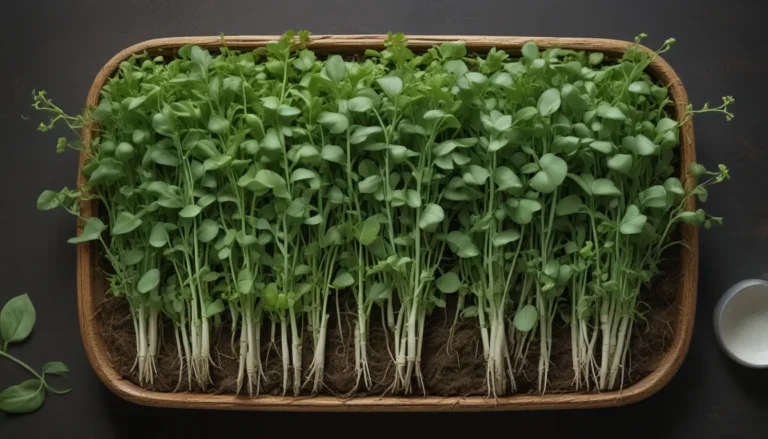How to Successfully Propagate Pothos Plants: A Comprehensive Guide

If you want to fill your home with beautiful, vine-y green goodness, pothos plants are the way to go. Not only are they incredibly easy to grow, but they are also a breeze to propagate. In this guide, we will explore various foolproof methods for propagating pothos plants, as well as one that doesn’t work.
Why Pothos Plants are the Best
Pothos plants are known for their forgiving nature and are extremely low maintenance. If you forget to water them or neglect them for a while, they will forgive you without skipping a beat. This easy-going nature doesn’t just extend to care but also to propagation – making them a popular choice for beginner gardeners and experienced green thumbs alike.
If you’re looking to expand your pothos collection without breaking the bank, propagation is the way to go. You can simply take a few cuttings from an existing plant and watch them grow into beautiful new pothos babies.
What You’ll Learn
- Choosing a Propagation Method – Preparation – Rooting Cuttings in Water – Rooting Cuttings in Soil – Layering – Root Division – Seeds
Now, let’s roll up our sleeves, grab our gardening gloves, and get ready to propagate some pothos plants!
Choosing a Propagation Method
Before you get started, it’s essential to understand the different methods of propagation to determine which one will work best for your needs.
Rooting Cuttings in Water vs. Soil
- Water Method: This method involves rooting cuttings in water. While this process results in quicker root formation, the roots may not be as well-adapted to soil conditions, requiring more time to adjust once transplanted.
- Soil Method: Rooting cuttings in soil takes longer to establish roots but results in stronger, more resilient roots that adapt well to soil conditions.
Whether you choose the water or soil method, the key is to ensure that your cuttings have at least one node (the spot where leaves emerge from the stem) to form roots successfully.
Layering and Root Division
- Layering: Layering involves burying a portion of the vine while still attached to the parent plant. This method allows the vine to form roots at the node before being potted separately.
- Root Division: Ideal for dividing oversized plants or those growing too large for their containers, root division involves separating the plant into smaller sections for easy transplantation.
Preparation
Before you begin the propagation process, it’s essential to prioritize safety. Pothos plants contain calcium oxalate, which can cause skin irritation. Be sure to wear gloves and a long-sleeved shirt to protect your skin from any potential irritation.
Additionally, prepare all your tools, including a glass filled with water or a container with fresh potting soil, to ensure a seamless propagation process.
Remember to sanitize your containers, tools, and potting soil to prevent any pathogens from infecting the plant during the propagation process.
Rooting Cuttings in Water
To propagate pothos cuttings in water, select a six-inch stem cutting with at least one leaf and one node. Place the cutting in a glass of room-temperature water and keep it in a bright, indirect sunlight.
Change the water every few days and monitor for root growth. Once the roots reach an inch in length, transplant the cutting into potting soil to allow it to adjust to soil conditions.
Rooting Cuttings in Soil
For soil propagation, dip the end of the cutting in rooting hormone powder before planting it in a prepared container filled with potting substrate. Ensure the cutting has at least one node and one leaf to facilitate root formation.
Maintaining moist soil conditions, place the container in bright, indirect sunlight to encourage root growth. Once the cutting shows resistance when gently tugged, it’s ready for transplantation into a permanent container.
Layering
Layering is an easy and effective propagation method where a portion of the vine is buried in potting soil while still attached to the parent plant. Keep the soil moist and wait for roots to form before transplanting the new plant into a separate container.
For multiple rooted cuttings from one vine, practice compound layering by tucking the same length of vine under the soil in different locations.
Root Division
When your pothos plant outgrows its container, or you wish to trim it down, root division is an ideal method. Gently separate the plant into smaller sections, ensuring each part has sufficient roots to thrive independently.
Seeds
While pothos plants can produce flowers and seeds, mature pothos plants rarely blossom, making seed propagation a challenging option. Instead, focus on the other easy and effective propagation methods described above for successful plant growth.
Conclusion
Propagating pothos plants is a rewarding and straightforward process that anyone can master. Whether you’re new to plant propagation or a seasoned gardener, pothos plants will make you feel like a master gardener with minimal effort.
Transform your space into a lush green haven with an abundance of pothos plants propagated using the simple and effective methods discussed in this guide. Share your propagation journey in the comments section below and let us know which method worked best for you!
For more pothos-related guides and tips, explore our collection of articles:
- My Pothos Leaves Are Turning Yellow! What’s Wrong and What to Do
- How to Grow and Care For Pothos Houseplants
- Why Is My Pothos Plant Stunted? 7 Reasons for Poor Leaf Growth
Propagate with care and watch your pothos plant family grow with ease and grace!





